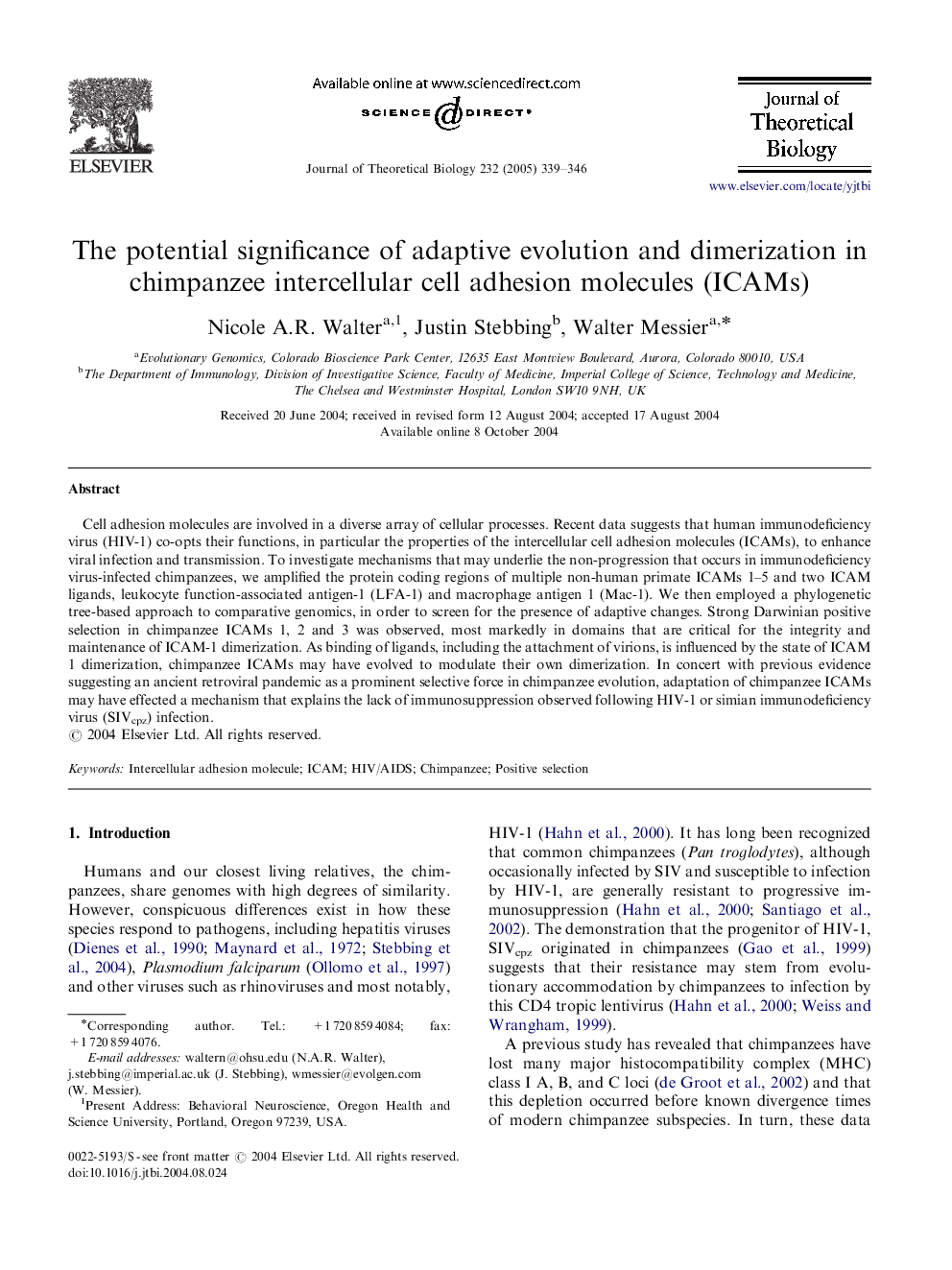| Article ID | Journal | Published Year | Pages | File Type |
|---|---|---|---|---|
| 9469935 | Journal of Theoretical Biology | 2005 | 8 Pages |
Abstract
Cell adhesion molecules are involved in a diverse array of cellular processes. Recent data suggests that human immunodeficiency virus (HIV-1) co-opts their functions, in particular the properties of the intercellular cell adhesion molecules (ICAMs), to enhance viral infection and transmission. To investigate mechanisms that may underlie the non-progression that occurs in immunodeficiency virus-infected chimpanzees, we amplified the protein coding regions of multiple non-human primate ICAMs 1-5 and two ICAM ligands, leukocyte function-associated antigen-1 (LFA-1) and macrophage antigen 1 (Mac-1). We then employed a phylogenetic tree-based approach to comparative genomics, in order to screen for the presence of adaptive changes. Strong Darwinian positive selection in chimpanzee ICAMs 1, 2 and 3 was observed, most markedly in domains that are critical for the integrity and maintenance of ICAM-1 dimerization. As binding of ligands, including the attachment of virions, is influenced by the state of ICAM 1 dimerization, chimpanzee ICAMs may have evolved to modulate their own dimerization. In concert with previous evidence suggesting an ancient retroviral pandemic as a prominent selective force in chimpanzee evolution, adaptation of chimpanzee ICAMs may have effected a mechanism that explains the lack of immunosuppression observed following HIV-1 or simian immunodeficiency virus (SIVcpz) infection.
Related Topics
Life Sciences
Agricultural and Biological Sciences
Agricultural and Biological Sciences (General)
Authors
Nicole A.R. Walter, Justin Stebbing, Walter Messier,
